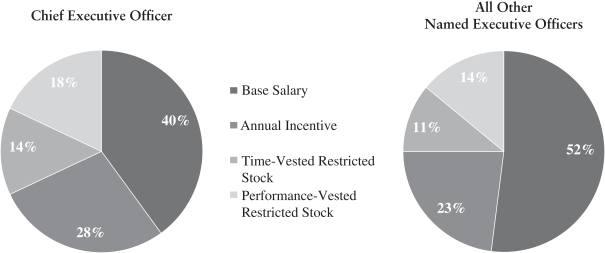Mr. Painter brings valuable experience to the Board of Directors and management as a current President
and Chief Executive Officer of a public company that, similar to us, is in the business of designing, manufacturing and marketing specialized, engineered equipment. The Board of Directors believes that Mr. Painter’s diverse experience in
operations, finance, mergers and acquisitions and corporate strategy enables him to provide critical insight to the Board of Directors and management that will help us to achieve our strategic goals.
Directors Whose Terms Do Not Expire at the 2019 Annual Meeting
James J. Barber, Ph.D.
Age: 65
Director Since: 2011
Term Expires: 2020
Dr. Barber has been an independent consultant and the principal of Barber Advisors, LLC, a consulting business advising firms and non-profits in the areas of strategy, management, marketing, and operations, since September 2007. From January 2000 to May 2007, Dr. Barber was the President and Chief Executive Officer of Metabolix, Inc.
(NASDAQ: MBLX), a bioscience company focused on plastics, chemicals and energy. He was responsible for transforming Metabolix from a research boutique into a leader in “clean tech” and industrial biotechnology.
Prior to joining Metabolix, Dr. Barber served as Global Business Director for the Organometallics and Catalysts business of Albemarle Corporation (NYSE:
ALB), a specialty chemicals company. Prior to his tenure at Albemarle, Dr. Barber was Director of Business Development at Ethyl Corporation, a fuel additives and specialty chemicals company. He also previously served as President of Geltech,
Inc., a precision molded micro optics company, and as Chief Operating Officer of Hyperion Catalysis International, a carbon nanofiber developer and producer.
Dr. Barber has served as the independent non-executive chairman of Itaconix plc (formerly Revolymer plc) (LON:
ITX), a specialty chemicals company, since December 2018, and served as a non-executive director of Itaconix plc from September 2016 to November 2018. He has also served as a director of Agrivida, a private
company, from first quarter 2011 through December 2014, of Allylix, a private company, from May 2012 through December 2014, of Segetis, Inc., a private company, from July 2012 through February 2016, of Itaconix, Inc., a private company, from June
2014 through June 2016, and of Nanocomp Technologies, Inc., a private company, from February 2014 through February 2018. From February 2008 through November 2010, Dr. Barber was a director and on the Finance Committee of Bluewater Holdings
Corp., a provider of sewage and water-treatment services, which filed for Chapter 11 bankruptcy protection in October 2010.
Dr. Barber was awarded
the American Chemical Society’s Henry F. Whalen, Jr. award for Business Development in September 2003. He received his B.S. in Chemistry from Rensselaer Polytechnic Institute and a Ph.D. in Organic Chemistry from the Massachusetts Institute of
Technology.
Dr. Barber brings to our Board of Directors substantial executive level leadership experience and a deep understanding of product and
business development in highly technical industries and alternative energy markets. Dr. Barber also has significant experience in structuring both joint venture and acquisition transactions.
Gerard T. Mazurkiewicz
Age: 72
Director Since: 2007
Term Expires: 2020
Mr. Mazurkiewicz has been a Tax Partner with Dopkins & Company, LLP, a regional accounting firm located in Buffalo, New York, since 2004. Prior
to his tenure at Dopkins & Company, Mr. Mazurkiewicz spent more than 32 years with KPMG, LLP, and was the Partner in Charge of KPMG’s upstate New York/Albany tax practice prior to his retirement in 2002.
Mr. Mazurkiewicz also serves as a director of Trebor, Inc., a distributor of tissue, pulp, paper and container board and as a director of Robert James
Sales, Inc., a distributor of stainless steel pipe, valves, and fittings.
6



